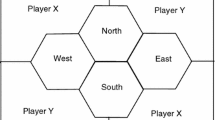Abstract
In cricket, a rain-affected pitch can make batting more difficult than normal. Several other conditions such as poor light or an initially lively pitch, may also result in difficulties for the batsmen. In this note, we refer to all of them as ‘sticky wickets’. On sticky wickets, lower order batsmen are often sent into ‘hold the fort’ until conditions improve. In this paper, a stochastic dynamic programming model is used to examine the appropriateness of this policy. The model suggests that the tactic is often optimal when the sticky wicket persists until the end of the day's play, but not often when the sticky wicket is transitory. In some circumstances, it is worthwhile, on a normal wicket near the end of the day, to send in a lower order batsman to hold the fort (a night watchman): when the wicket is sticky, this tactic is even more worthwhile.
Similar content being viewed by others
References
Bradman D (1997). Farewell to Cricket. ETT Imprint: Sydney.
Clarke SR (1988). Dynamic programming in one-day cricket—optimal scoring rates. J Opl Res Soc 39: 331–337.
Clarke SR and Norman JM (2003). Dynamic programming in cricket: Choosing a night watchman. J Opl Res Soc 54: 838–845.
Hastings NAJ (1973). Dynamic Programming with Management Applications. Butterworth: London.
Preston I and Thomas J (2002). Rain rules for limited overs cricket and probabilities of victory. Statistician 51: 189–202.
Smith DK (1991). Dynamic Programming: A Practical Introduction. Ellis Horwood: Chichester.
Acknowledgements
We thank three anonymous referees, whose comments helped us to improve this paper. Note: An earlier version of this paper was presented at the seventh Australasian Conference on Mathematics and Computers in Sport, Palmerston North, 2004.
Author information
Authors and Affiliations
Corresponding author
Rights and permissions
About this article
Cite this article
Norman, J., Clarke, S. Dynamic programming in cricket: optimizing batting order for a sticky wicket. J Oper Res Soc 58, 1678–1682 (2007). https://doi.org/10.1057/palgrave.jors.2602309
Received:
Accepted:
Published:
Issue Date:
DOI: https://doi.org/10.1057/palgrave.jors.2602309




